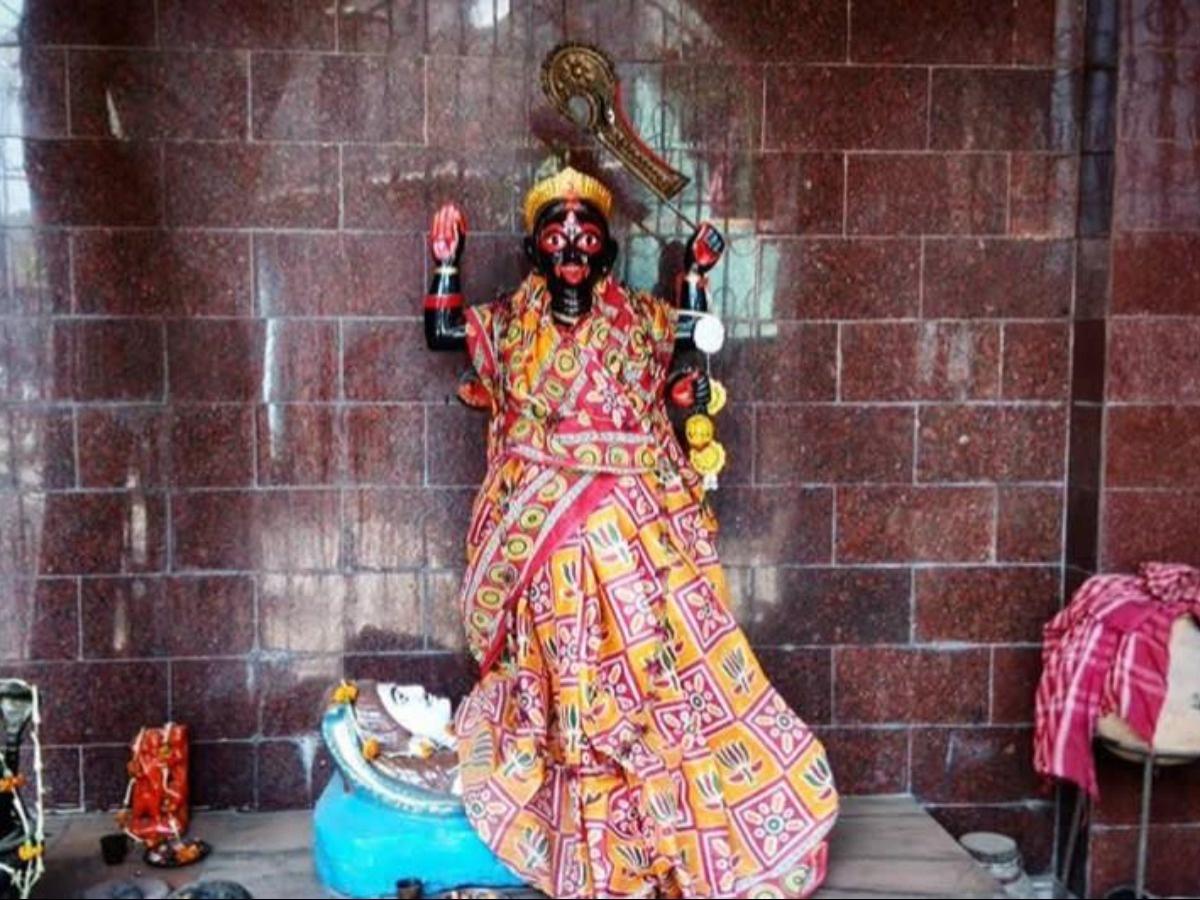If you are seeking a place that beautifully blends the cultures of two nations, the Chinese Kali Temple is an exquisite example. This temple, famously known as the Chinese Kali Temple, masterfully portrays the cultures of both countries
Location

The Chinese Kali Temple is located in Tangra, Kolkata, West Bengal, India.
History of chinese kali temple
The China Kali Mandir in Kolkata holds a captivating tale. In the vicinity, a young Chinese boy fell severely ill beyond medical aid. Desperate, his parents resorted to prayer beside an aged tree, imploring for his recovery.
Their fervent prayers persisted for days until a sudden miracle occurred—the boy’s health was restored. Viewing it as Kali’s divine intervention, they erected a temple beneath the tree in gratitude. Within it, they discovered a black stone adorned with sindoor, a red powder used in Kali worship, interpreting it as a divine sign and enshrining it as the goddess’s idol. This miraculous event bestowed religious significance upon the site, transforming it into a revered pilgrimage destination in Kolkata, West Bengal.
Structure of chinese kali temple

Before its current structure, devotees worshipped a Black Stone smeared with sindoor under a tree at this sacred site in Kolkata. Notably, the temple offers noodles and chopsuey as holy offerings, a unique aspect of its tradition.
The temple’s architecture is a captivating blend of Chinese and Hindu influences. The idol of Kali features a Chinese facial depiction adorned in a Bengali sari, symbolising the convergence of the two cultures’ devotion. Intricate carvings of Chinese dragons and lanterns adorn the temple, enhancing its allure and grace. Drawing both Chinese and Bengali worshippers, the temple serves as a place for offering prayers and incense to the goddess.
The Temple’s Delicacies/strong>
A distinctive feature of this temple is its prasad, or sacred food offerings, which set it apart from others across India. Prepared by Chinese volunteers, the prasad includes noodles, chop suey, and rice, offering a flavorful symbol of cultural exchange and integration embodied by the temple. Additionally, on special occasions such as Kali puja, the festival of Kali, vegetarian dishes are also served at the temple, further enriching its culinary offerings
How to reach?

By Car or Taxi: You can hire a taxi or use a ride-hailing service to reach the temple directly. Simply provide the temple’s name and address to the driver for navigation.
By Public Bus: Kolkata has an extensive network of public buses. You can find a bus route that passes through Tangra and get off at the nearest bus stop to the temple. From there, you can walk or take a short rickshaw ride to reach the temple.
By Metro: If you prefer using the metro, you can take the Kolkata Metro to the nearest station and then use a taxi or rickshaw to reach the temple.
By Train: If you are travelling from outside Kolkata, you can arrive at one of Kolkata’s railway stations and then use local transportation options like taxis or buses to reach the temple.
By Walking: Depending on your location in Kolkata, if you’re in the vicinity, you may choose to walk to the temple if it’s feasible.
Make sure to check the temple’s exact location and plan your route accordingly using maps or local transportation guides to ensure a smooth journey.
Temple timing
The National Dairy Research Institute, a centre for scientific advancement in the area of dairy technology, is proudly located in Karnal. Observing state-of-the-art research and development, visitors may learn about the vital role Karnal plays in India’s da
China Kali Mandir Kolkata opens from 5:00 AM to 2:00 PM in the morning and from 5:00 PM to 10:30 PM in the evening.
Some special tips
Here are some special tips to consider when visiting the Chinese Kali Temple: these are basic
tips hence, please follow these tips diligently
Respect the Culture: Be mindful of the cultural significance of the temple and respect the traditions observed by the devotees. Dress modestly and avoid wearing revealing clothing.
Photography: Always ask for permission before taking photographs inside the temple premises. Some areas may be considered sacred and photography may not be allowed.
Footwear: It’s customary to remove your footwear before entering the temple. There may be designated areas to leave your shoes or sandals outside the temple.
Prasad: Partake in the prasad offerings with reverence. These offerings hold symbolic significance and are an integral part of the temple experience.
Quiet Reflection: Maintain a respectful demeanour inside the temple. Avoid loud conversations and be mindful of other worshippers who may be engaged in prayer or meditation.
Cultural Exchange: Embrace the unique cultural blend represented by the temple. Take the opportunity to learn about the fusion of Chinese and Hindu traditions showcased in its architecture, rituals, and cuisine.
Guided Tours: If available, consider joining a guided tour of the temple. This can provide valuable insights into its history, significance, and architectural features.
Timing: Check the temple’s opening hours before planning your visit. It’s also advisable to avoid peak times if you prefer a quieter and more contemplative experience.
Local Customs: Familiarise yourself with any local customs or practices observed at the temple to ensure you adhere to respectful behaviour during your visit.
Leave No Trace: Help maintain the cleanliness of the temple premises by disposing of any trash properly and refraining from littering.
By following these tips, you can make the most of your visit to the Chinese Kali Temple while showing respect for its cultural heritage and spiritual significance.
Final thoughts
The temple transcends its role as a mere place of worship; it serves as a beacon of learning and inspiration. It imparts invaluable lessons on the significance of cultural diversity and tolerance, illustrating how various communities can peacefully coexist while honouring each other’s beliefs and traditions. Moreover, it exemplifies the profound influence and reverence accorded to Kali, who unites people of diverse backgrounds and faiths under her grace. Thus, the temple stands as a compelling destination, offering a profound experience that merits a visit.











